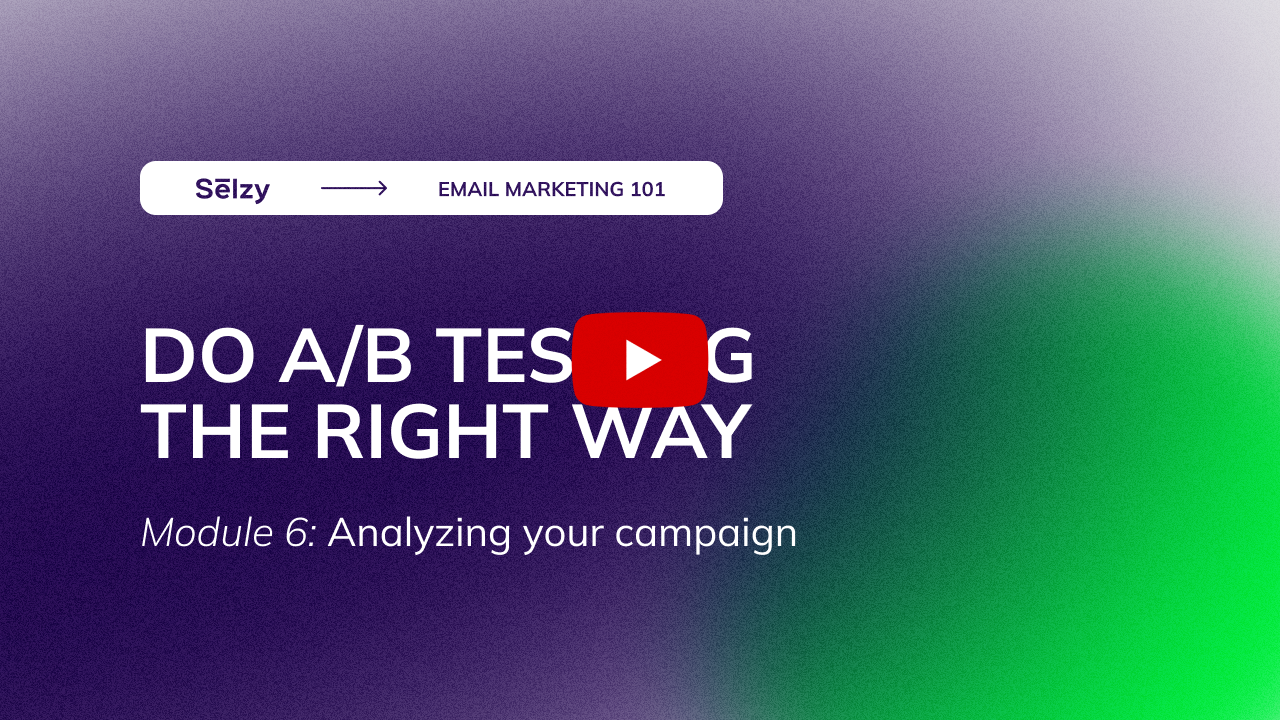A/B Testing: How to Interpret Your Metrics Correctly
This is a transcript of lesson 16 of Email Marketing 101 Course by Selzy.

Welcome back to Selzy’s course on email marketing!
In the previous lesson, we talked about the basic and advanced metrics of your email campaigns. And now we’ll continue the discussion. You’ll learn what to look for in your campaign data, how to identify trends, interpret your findings, and improve.
What is A/B testing?
Want to improve your metrics and increase the efficiency of your campaigns? Try A/B testing.
A/B testing or split testing is a 3-step process:
You create two different versions of one email tweaking one parameter
Send two different wersions of the email to two different parts of your audience
You compare the results and determine the best option
Then you act on your insights.
Companies that A/B test every email have a 37% higher ROI than those who never do.
So what can you test that way?
You can test the sender name. For example, you can compare the two “From” options: simply [Your company] or [Employee’s name from Your company]. See which option gets higher engagement.

This visual is only available in a video lesson
The other option is subject lines. Include the recipient’s name in the subject line and see if this variant performs better than your regular one. Or compare the use of discount percent and amount in dollars.

This visual is only available in a video lesson
You can separately test the preview text as well to make the open rates even more effective.

This visual is only available in a video lesson
You can also test visuals, body copy, and call-to-action.

This visual is only available in a video lesson
Choose one metric you want to affect and then try tweaking the parameters associated with it. But only test one thing at a time!
On your screen you can see a table showing what components of the email you can test to affect different email metrics. Use it in your next A/B testing!

This visual is only available in a video lesson
Now that you know everything about data interpretation and A/B testing, there’s one last aspect of analysis left. Click on the next lesson to learn more about the most important metric — conversion to the target action.
This is a transcript of lesson 16 of Email Marketing 101 Course by Selzy.